Let’s be honest, for a certain type of bloke it is a bucket-list thing. The glory days of Jaguar, racing through the night, the romance, the glamour, Steve McQueen and all that. When a good friend of mine, who has a place in France, suggested a long weekend including a day at the Le Mans 24 Hour race I jumped at the chance. I suppose I am what might be called a Passive Petrolhead; I am less interested than I used to be – the last time I went to a Grand Prix Mansel was still racing – but there is something about the demented howl of a V8 that sets the blood a-pumping.
But what to take? The X-T1 of course, and… I would have loved to have been writing this piece as a review of the new 90mm – a bit of a dream lens for me, equating as it does in old money to a fast 135 – but alas the timing was wrong and no amount of begging to Fuji UK could get one to these shores fast enough.
So instead I paired the X-T1 with my trusty 55-200mm and the increasingly handy, albeit heavy, 18-135mm. I thought that between those two I could do the day justice – and I was right. The lot went into a small backpack (a story for another time) along with a slew of spare batteries and cards. My X-T1 has, incidentally, three “modifications” – the vertical grip which both improves handling and provides welcome extra power, and the Lensmate thumb-rest which just helps to weld the camera to my hand.
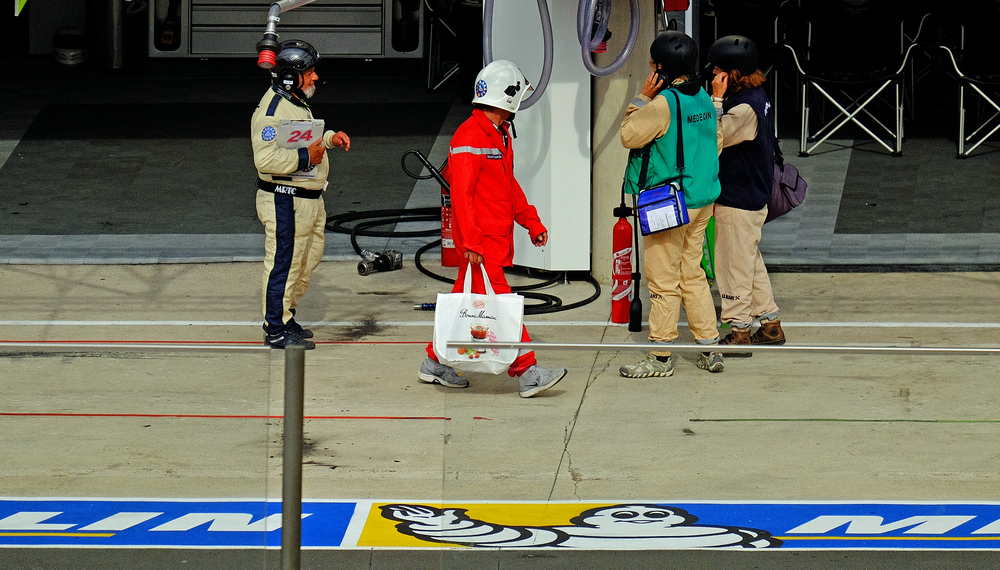
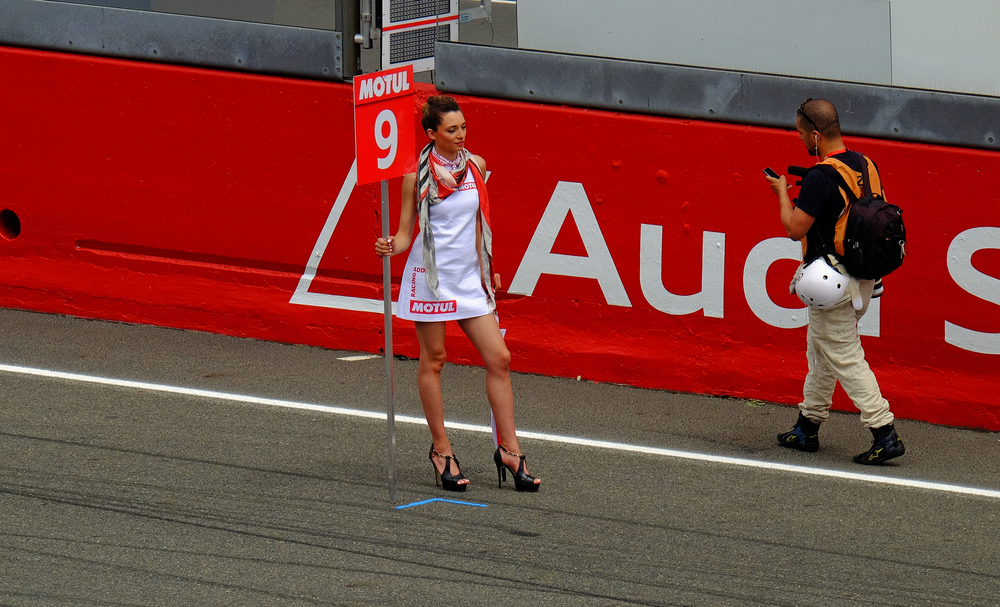
The third modification? A strip of black insulating tape to immobilise the tilty rear screen. I admit it – I detest the blasted things. If there was a non-tilty option, even at extra cost, I would buy it tomorrow.
Saturday dawned, a typical Normandy Summer’s day; overcast and a bit… meh. We bundled into the car and headed south for a couple of hours to arrive at the track mid-morning.
Le Mans does it well. An assault on the senses from the moment you arrive, if ever there was a target-rich environment for the keen photographer this is it. It feels as if the entire audience of Top Gear has been crammed into one place for the day. I learned afterwards that over a quarter of a million people were there that day, and I can well believe it.
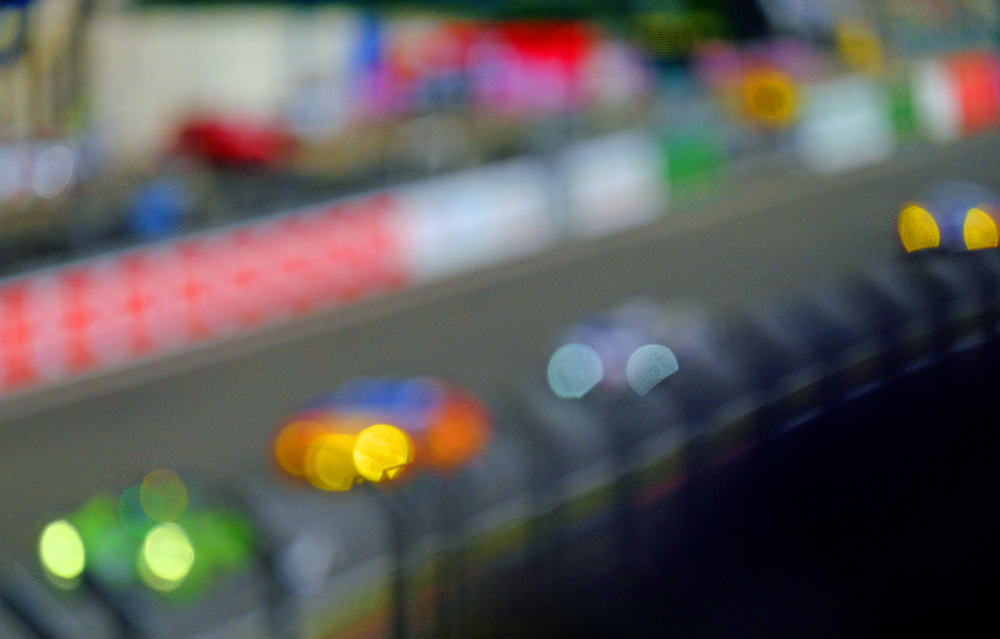
We had grandstand seats – a pleasant and welcome surprise. An added bonus was that they were right at the start, opposite the pits, with a great view inside. The 55-200 had just enough reach to provide an insight into what goes on while the cars are racing – not a lot, apparently!
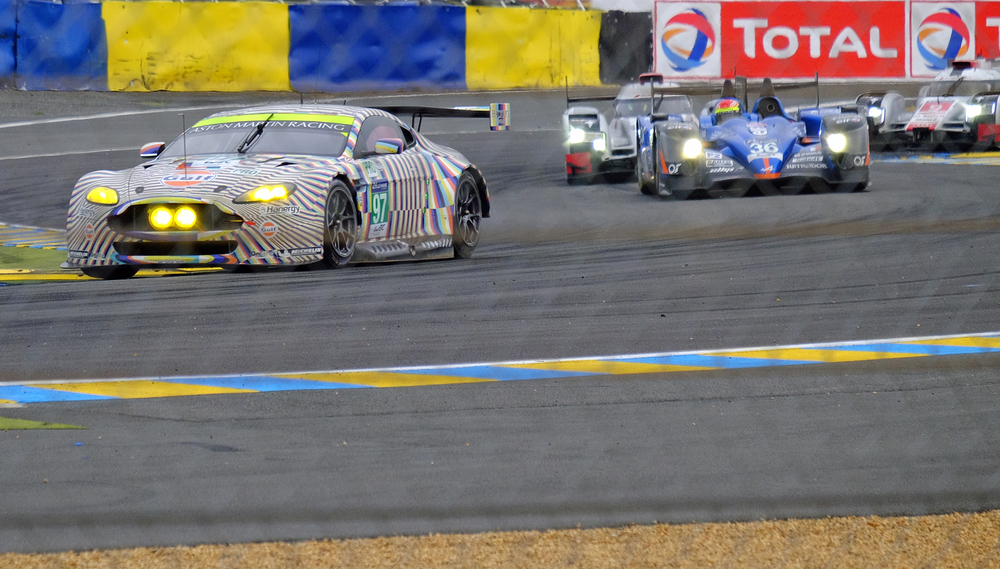
The main race starts around three in the afternoon but there was plenty to focus on before then (pun fully intended). As we arrived a classics race was in full swing, giving the chance to see GT40s, Morgans and older Aston Martins battle for the honours. The sparsely populated stands at this point gave me the opportunity to try out some alternative vantage points and to get my eye in with the X-T1 before the main event.
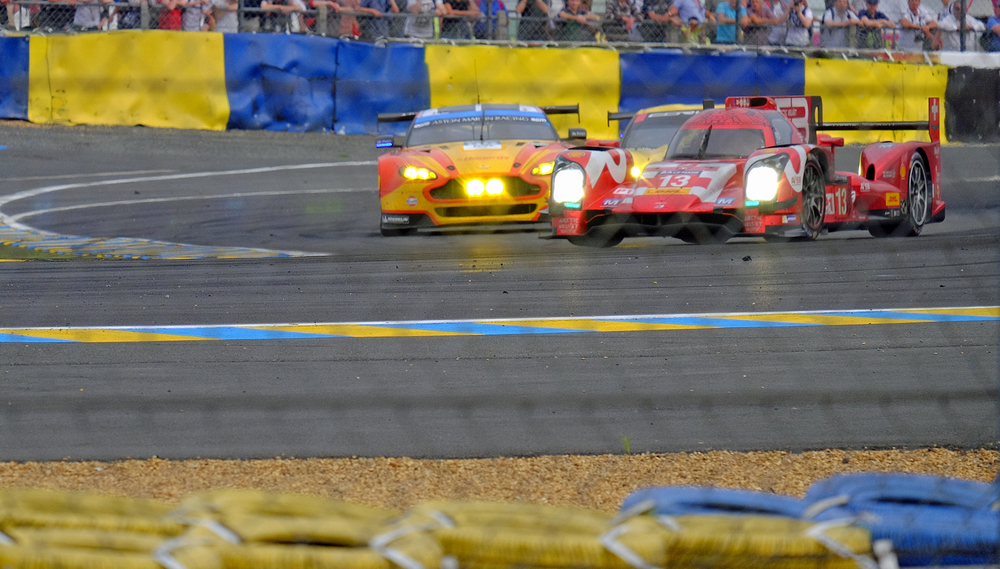
Bear in mind that this was pre firmware 4.0 so my approach was quite “old school” – wide area single-AF with drive set to continuous high. I fired in short bursts of 3-6 shots at a time partly to hold focus but also so as not to overwhelm the buffer. The experience did underline the importance of using cards with the highest write-speed you can find – and afford. When things really got going later I was pushing the limits of what the buffer could flush and the constraint was the card not the camera.
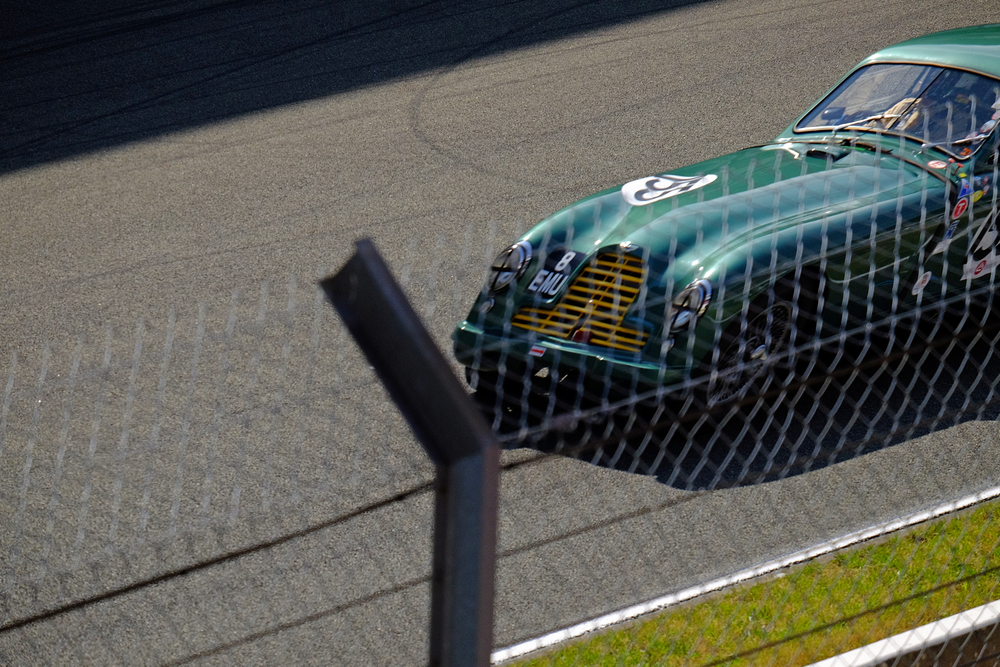
The next challenge I encountered was shutter-related. Electronic shutter to be precise. I tend to leave my X-T1 set to Electronic + Mechanical because I like to shoot wide open and the extra headroom afforded by the electronic shutter has saved my bacon more than once. On this occasion, however it proved to be my undoing in a number of shots. I found myself afflicted by the dreaded rolling shutter effect, which turned some of the cars in my photos into something out of a Friz Freleng cartoon. The Aston Martin you see here is one of the worst examples, but far from the only one. Lesson learned, and I blame the photographer not the tool. Next time I’ll turn it off and pay more attention to stopping down a little.
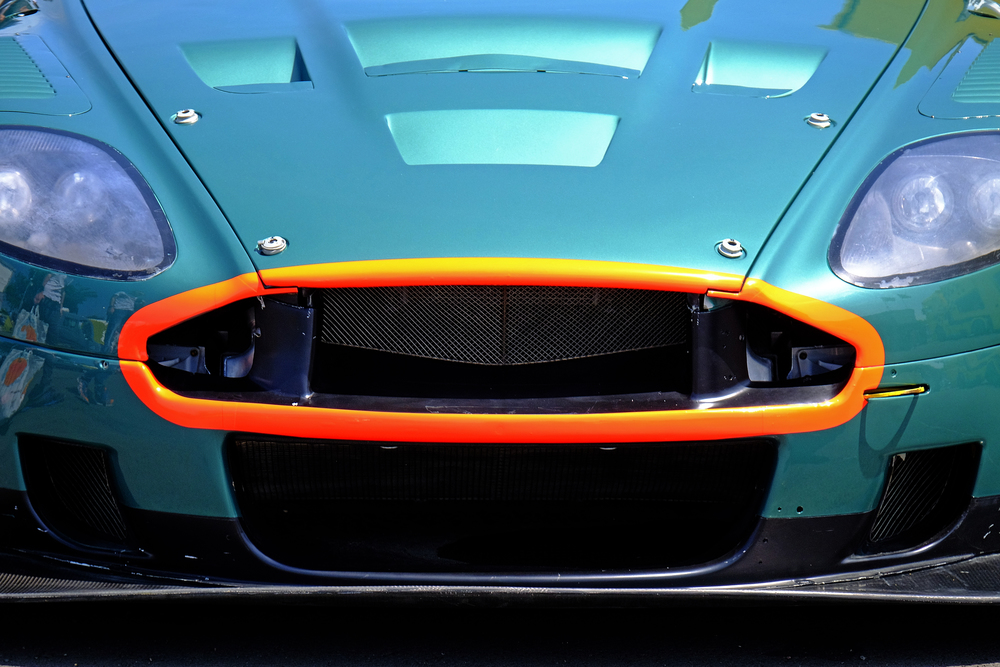
Which leads me to my last observation. Without accreditation it’s hard to get shots of the cars in full flow without the wire mesh safety fences getting in the way. It’s fair enough, I suppose – nobody really wants to be dodging flying chunks of car – but a source of frustration. I did my best to throw the links of the fences out of focus but, irritatingly they are still there in a number of shots. If only I had had a fast, long lens: A 90mm f/2.0 would have been ideal.
So, can the X Series shoot action? Oh yes. Are there better lenses for the job than the one I used? Yes. And there will be more. Next time I go to Le Mans I have promised myself that I shall have that ninety in my bag – I have it on order already – and maybe, just maybe, that superzoom we are promised.
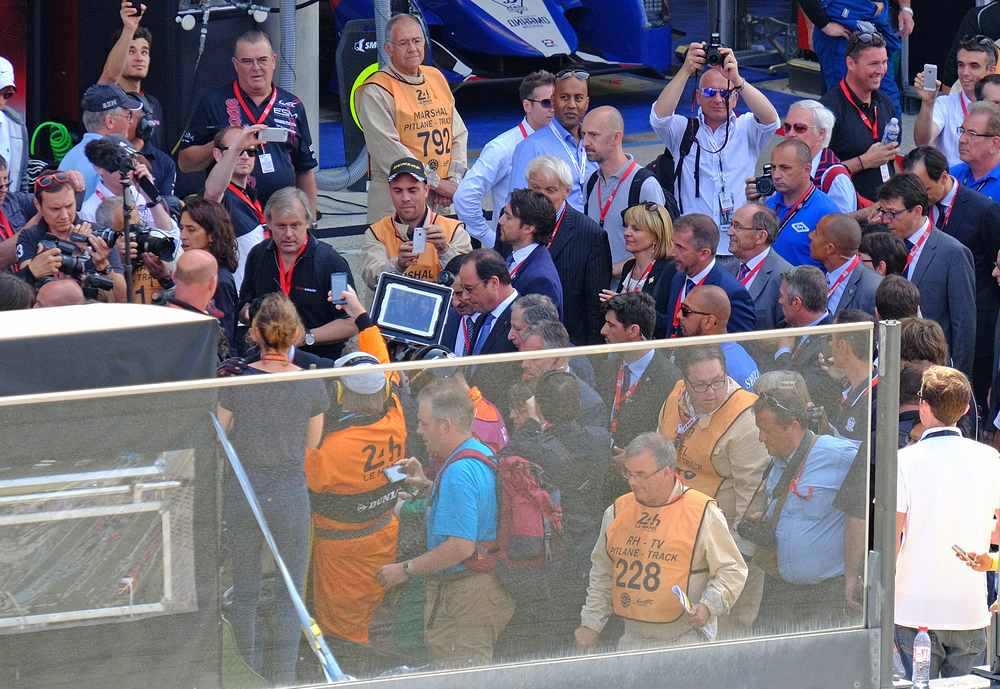

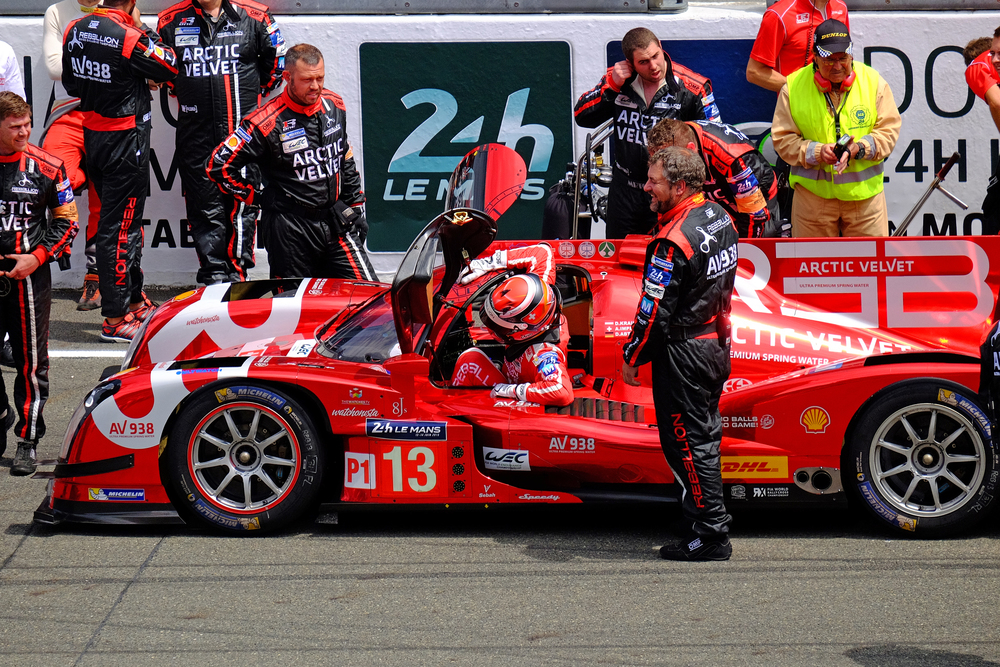
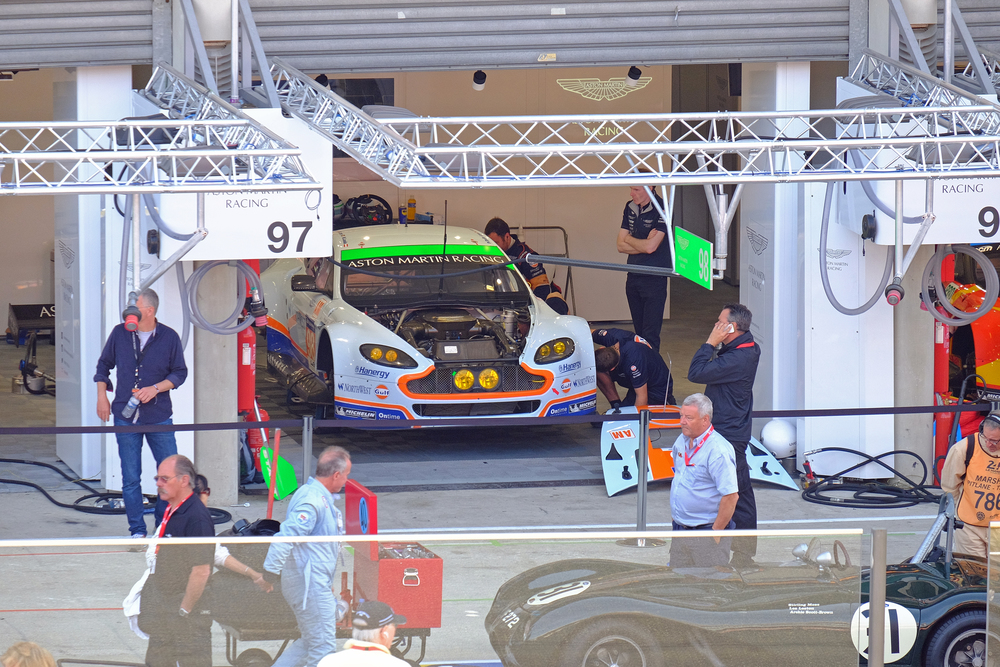
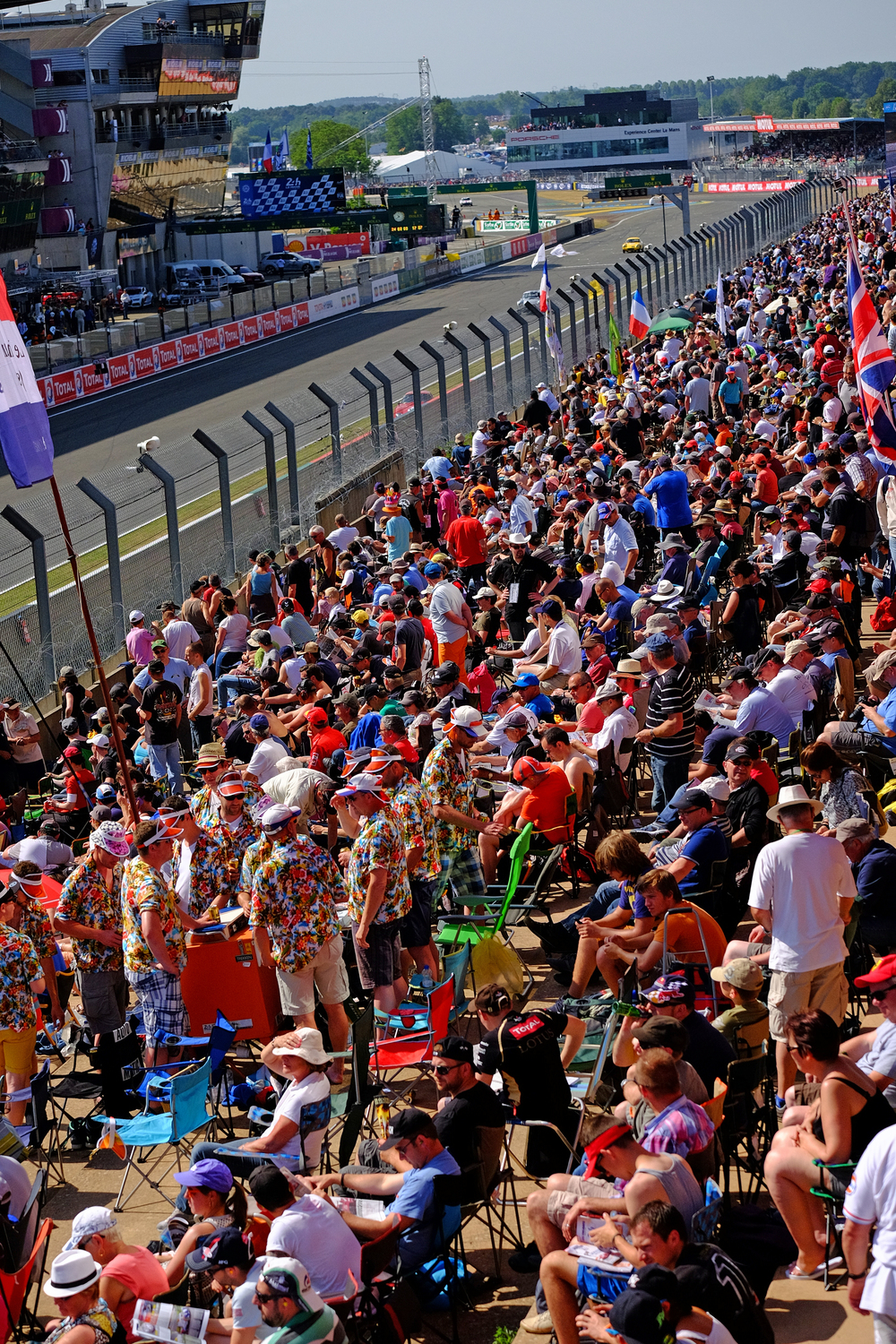
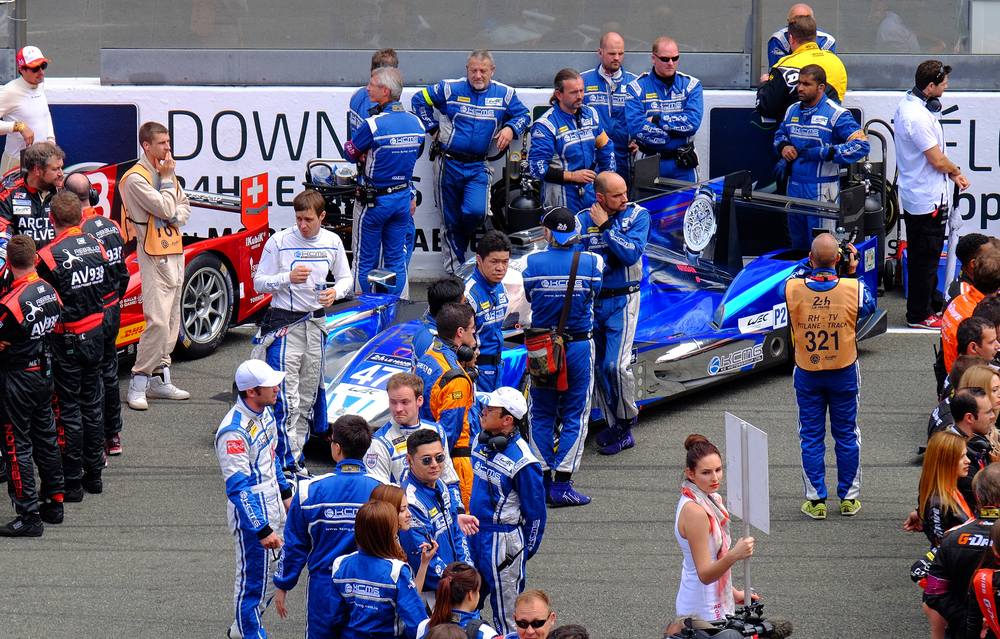
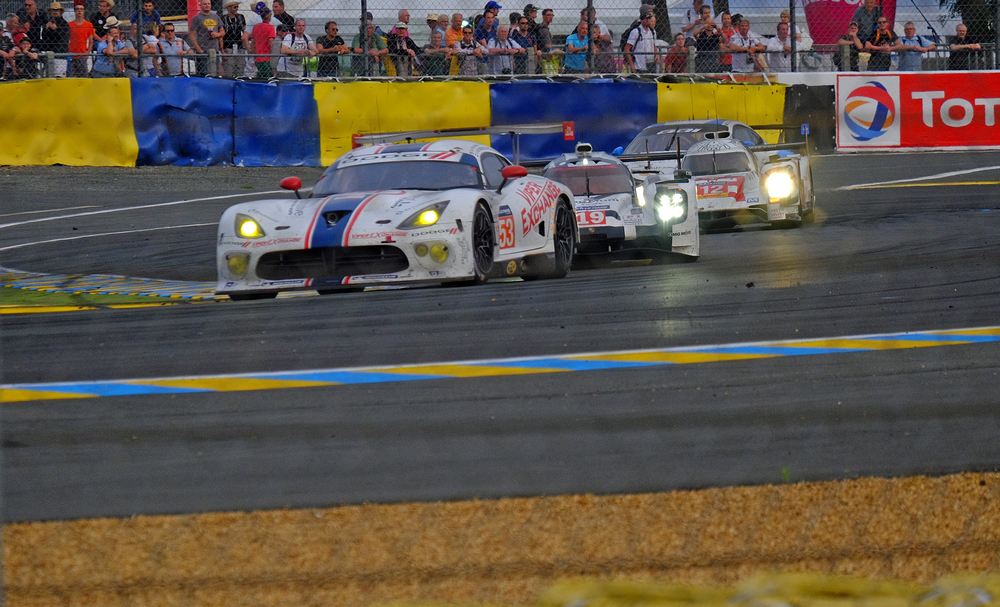
Hi John, thanks for your kind words, and for the info. I certainly intend to go again and there’s great merit in what you say – the grandstand was great for views of the start, and the activity in the pits, but pretty hopeless for any action shots of the cars. Heading out and around the corners is the way to go.
Bill , tx for the story.Under the circumstances you did very well with your photos.I am an old Le Mans hand having been to the race more than twenty times and I live in Australia .Over the years photography has become more and more difficult as the spectators have been moved back from the track and the catch fencing has got higher.Even the accredited photographers now can only shoot through small cut outs in the fencing.On the other hand the catch fencing has proved its worth a couple of times in recent years partic in 2011 when Alan McNish had his horrific accident
see https://www.youtube.com/watch?v=JW3NDGk6YQE
If you do go to the 24 hour race again Bill my advice is don’t bother with the grandstand seats -walk the track on foot and down at Tetre Rouge and on its approaches there are high spectator terraces and you can shoot the cars from above without shooting through the catch fencing.
My Le Mans photography -modern and vintage -is on my blog therollingroad.blogspot.com -just look under the Le Mans tab and eventually you will find some action shots sans the catch fencing.